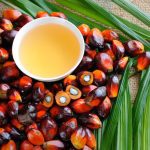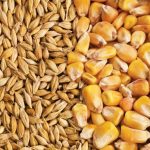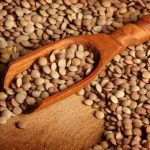Yellow pea bids in Western Canada are coming under pressure, while green pea prices hold steady.

Pulse Weekly: Yellow peas slip as India pauses levy cut

Warmer, drier October followed by colder, snowier November
The balance of October is likely to remain warmer than normal across the Canadian Prairies, but the weather could turn colder than normal in November, Weatherlogics chief scientist Scott Kehler explained.

Malaysia to produce less palm oil – USDA attaché
Palm oil production in Malaysia is projected to ease back in 2024/25 as compared to the previous year, said the United States Department of Agriculture (USDA) attaché in Kuala Lumpur.

Alberta harvest well ahead of five-year average
Progress hits 85 per cent complete
Harvest progress in Alberta reached 85 per cent complete as of Oct. 1, progressing 11 points on the week, according to the latest provincial crop report.

Prairie Wheat Weekly: Strong gains for red spring varieties
Spring wheat cash prices in Western Canada posted double-digit increases for the week ended Oct. 3, while durum bids were up much more modestly.

Feed Grains Weekly: Feed prices stabilizing, but weight an issue
Prices for feed barley in Western Canada have stabilized over the past week, although low bushel weights were leading to discounts.

Combining in Saskatchewan ahead of five-year average
Harvesting in Saskatchewan is in the home stretch as warm and dry conditions for the week ended Sept. 30 saw a 12-point gain to 91 per cent complete, the provincial agriculture department reported.

China to grow more corn in 2024/25
Corn production in China is expected to increase to 293 million tonnes in 2024/25, said a report from the United States Department of Agriculture attache in Beijing, with improved yields overriding a slight reduction in harvested area.

Pulse Weekly: Strong export demand boosts most green lentil pricing
Prices for green lentils were steady to higher for the week ending Sept. 27, according to Prairie Ag Hotwire. A broker credited increased foreign demand.

ICE Canada Weekly: Canola’s turnaround a ‘gift’ says broker
The turnaround in canola futures on the Intercontinental Exchange indicates canola traders are ignoring issues with China and the strike among Port of Vancouver grain workers.
